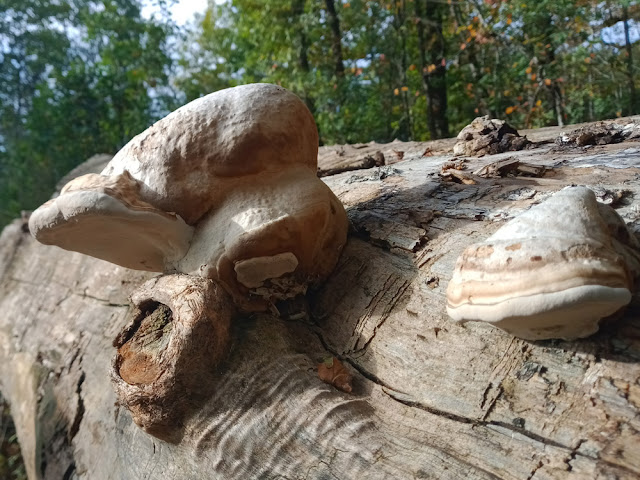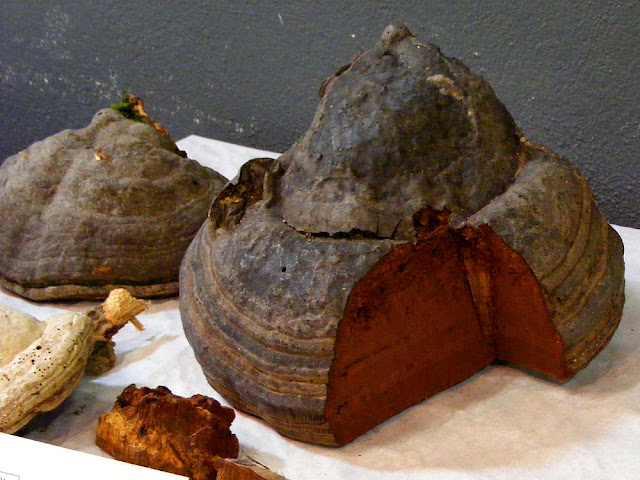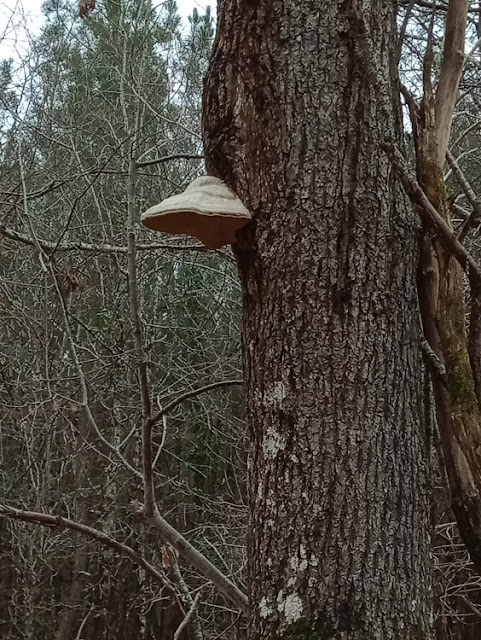The Tinder Fungus Fomes fomentarius (Fr. Amadouvier) could be used to replace certain plastics and be used in a variety of sectors, such as medicine. It's a common fungus in the Northern Hemisphere, growing on wood and can reach up to 50 cm across. Used as a firelighter since prehistoric times, it has also already been used in medicine in a number of ways (cauterisation, bandage, compress) and has been used to make clothes or decorative objects.
 |
| Growing on a fallen log in the forest. |
The biomaterials industry has been flourishing for some years. Mycomaterials in particular are popular because they have numerous advantages -- they are organic, biodegradable and their manufacture requires much less CO2. They are also more economical.
 |
| I discovered this one on a recently felled log, neatly sliced across to reveal the structure. |
Today mycomaterials present an interesting alternative to leather and synthetic textiles. They can also replace certain synthetic polymers to make packaging, furniture and even used as building construction materials and insulation.
 |
| Tinder fungus on display at an exhibition put on by the Association de Botanique et de Mycologie de Sainte Maure de Touraine. |
Tinder fungus has three layers with different qualities: the crust, which is a bit porous but dense and relatively uniform; the flesh, which is spongey, soft and leathery; and the tubes, which are hollow and parallel. Tests show that the flesh and tubes have qualities which are comparable to pine, leather and crossply, but the mycomaterial weighs less. Another possible advantage is that the fungus can be manipulated into growing into a particular form.
 |
| Growing in the forest. |
Scientists and engineers are working on mycomaterials in nanocomposites and polysaccharides. The product could also be used in a medical context as engineered tissue or make orthopedic implants.

No comments:
Post a Comment